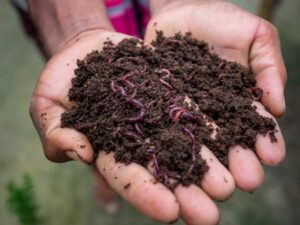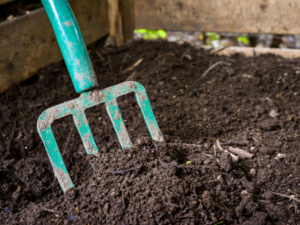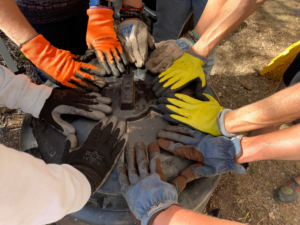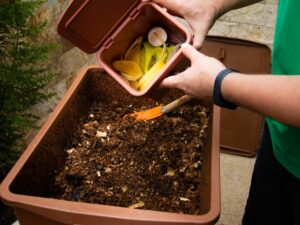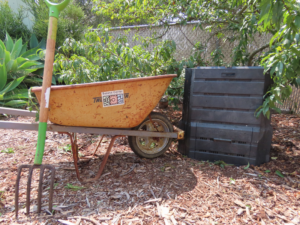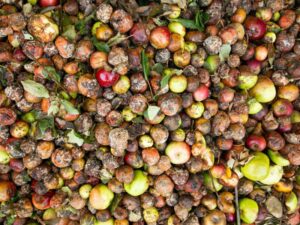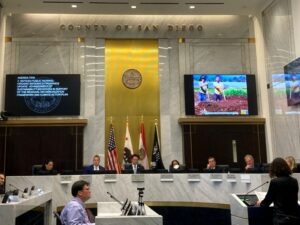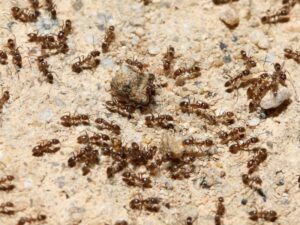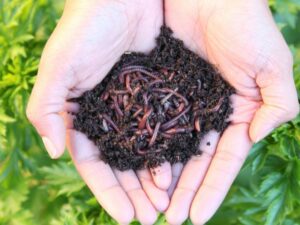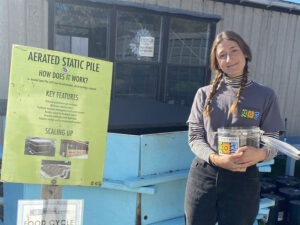Soil & Compost
Compost: It’s Alive!
The physical and chemical conditions in a compost heap seem logical if you think about what compost really is: an enormous pile of food for billions of minute organisms. These microorganisms have certain chemical requirements, including carbon for energy, nitrogen to build proteins, and oxygen for respiration. The most numerous organisms in a compost pile…
Read MoreFrom the Rotline: Aerobic Composting and Anaerobic Digestion – What’s the Difference?
This was an inquiry to our community Rotline, a hotline where community members may ask composting and waste questions and receive step-by-step answers from one of our expert staff members. Rotline Question: What is the temperature range for a compost pile that has gone anaerobic? Answer: Anaerobic digestion can occur at two temperature ranges: between…
Read MoreLearnings from a Master Composter Course
These observations were originally shared by Kaitlin Mitchell of Rutabega Education and have been edited for cohesiveness. Solana Center’s Master Composter courses are a unique opportunity to gain a more in-depth understanding of the art and science of the composting process and empower participants to share this knowledge and passion with others. One participant in…
Read MoreWorm Tea, Compost Tea & Leachate
Did you know that you can steep your finished compost or vermicompost in water to create a nutrient-rich liquid called “compost tea” that enriches soil and reduces plant pests and disease? Worm tea, a type of compost tea made from vermicompost, has the same benefits as worm castings but in liquid form. Castings are produced…
Read MoreFrom the Rotline: How Long Until My Compost Is Ready To Use?
Rotline Question: How long will it take until my compost is ready to be used? Answer: The timeline for composting depends on a number of factors. There are three basic approaches to composting which can be mixed and matched based on resources available and the composter’s goals. They are passive composting, active composting, and hot…
Read MoreTo Reduce Food Waste, Investors and Community Organizations Need to be at the Table
By Bea Miñana (Closed Loop Partners) and Jessica Toth (Solana Center for Environmental Innovation) Food waste is created at every point in our current food supply chain––on the farm, during manufacturing and transportation, on store shelves, at restaurants, and in our homes. Today, most of that uneaten food ends up in landfills, or is otherwise…
Read MoreSan Diego County unanimously passes ordinance in support of organic waste processing!
Celebrations are in order! The San Diego County Board of Supervisors just passed an updated ordinance that will amend the County’s existing zoning ordinance and allow organic material composting to occur in more areas of the unincorporated county. This will have a significant impact in the years to come on San Diego County’s ability to…
Read MoreHow to Save Your Worm Bins From Aggressive Ants
How do you save your worm bins from aggressive ants? To find the answer, we asked our summer college interns, Maddie and Kelly, to investigate. The worm bins at Solana Center recently experienced an increase in ant populations, possibly due to the decomposing food source and the moisture the bins provided. Although most species of ants will not harm…
Read MoreFrom the Rotline: Why are my worms trying to escape?!
Question: Why are my worms climbing out of the bin and trying to escape? Answer: The Great Escape by your worms means there is an imbalance in the worm bin. If your bin becomes too acidic, too moist, too dry, too compact, full of rotting food, full of food they don’t like, too warm, too…
Read MoreWhat is an Aerated Static Pile (ASP)?
Have you seen us mention ASP compost before and wondering what it means? ASP stands for aerated static pile which is a powerful system that uses large pipes to circulate air from fans through the pile, eliminating the need to physically aerate the composting organic material. This system can manage large quantities of waste and makes it particularly suitable…
Read More
